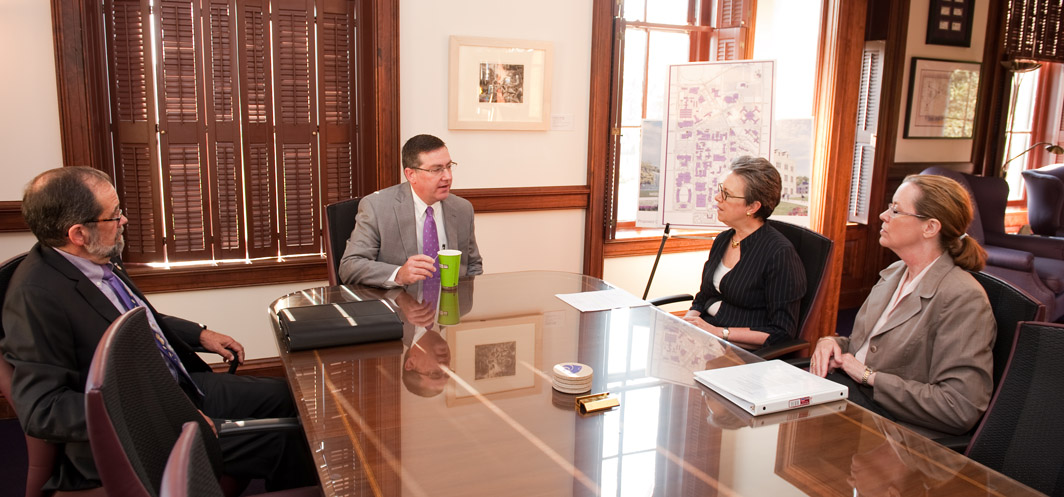August 15, 2011
USDA official visits K-State and NBAF site; BRI used to transition and expand agricultural research
Submitted by Communications and Marketing

Accepting an invitation from Kansas State University President Kirk Schulz, an official from the U.S. Department of Agriculture visited the university's campus Thursday.
Catherine Woteki, the USDA's under secretary for research, education and economics and the department chief scientist visited K-State's Biosecurity Research Institute at Pat Roberts Hall. The Biosecurity Research Institute at Pat Roberts Hall is K-State's BSL-3Ag facility.
While there Woteki met with university officials and researchers, and representatives from the Kansas congress, senate and governor's office. Woteki also toured the site for the Department of Homeland Security's National Bio and Agro-Defense Facility, or NBAF -- located at the northern edge of the K-State campus -- and discussed the growing research collaborations between the USDA and K-State, particularly those related to NBAF research.
"Certainly from the research perspective there's no question about the need for NBAF for the United States to maintain its scientific leadership in this extremely critical era of science, and for the safety of our food supply," Woteki said.
She said NBAF also will play an important role in vaccine and antiviral development and in creating new knowledge and technologies that would be shared with the scientific community.
Because NBAF is not projected to be fully operational until 2019 or 2020, experts at K-State and in the Manhattan, Kan., area are working on a series of research projects in the Biosecurity Research Institute that will transition and expand the work at the Plum Island Animal Disease Center in New York to NBAF.
"Maintaining this research is critical, and we're proud to use the Biosecurity Research Institute to help expand and advance the NBAF-related work," said Ron Trewyn, K-State vice president for research. "It's sure to be a seamless transition with the collaboration of expertise from K-State and the USDA's Center for Grain and Animal Health Research and Arthropod-Borne Animal Disease Research Unit."
While meeting with researchers and officials, Woteki said agricultural research has a broader effect than simply animal healthy and food safety. Technologies like in vitro fertilization were first developed in agriculture.
Also, because many emerging human diseases are zoonotic -- meaning the disease transfers from animals to humans, the better a disease is understood in animals, the more effectively the knowledge can be applied to public health.
"It's more likely that a new vaccine will first be made for an animal than for a person," Trewyn said. "So if you can address and solve those zoonotic diseases in the animal, all of the sudden you've done a huge thing for human health as well."
NBAF will be the country's largest facility for research on agents classified as bioscecurity level 4, or BSL-4. It will replace New York's aging Plum Island Animal Disease Center, a major BSL-3 animal disease research facility that Woteki said has "reached the end of its useful life."
Photo cutline: Catherine Woteki, the USDA's under secretary for research, education and economics and the department chief scientist (center right), and Mary Conley, director of research communications at the USDA's office of research, education and economics, meet with Kirk Schulz, K-State president, and Ron Trewyn, K-State vice president for research. Woteki came to the K-State campus to tour the BRI and NBAF site, and to discuss the growing research collaborations between the USDA and K-State.
